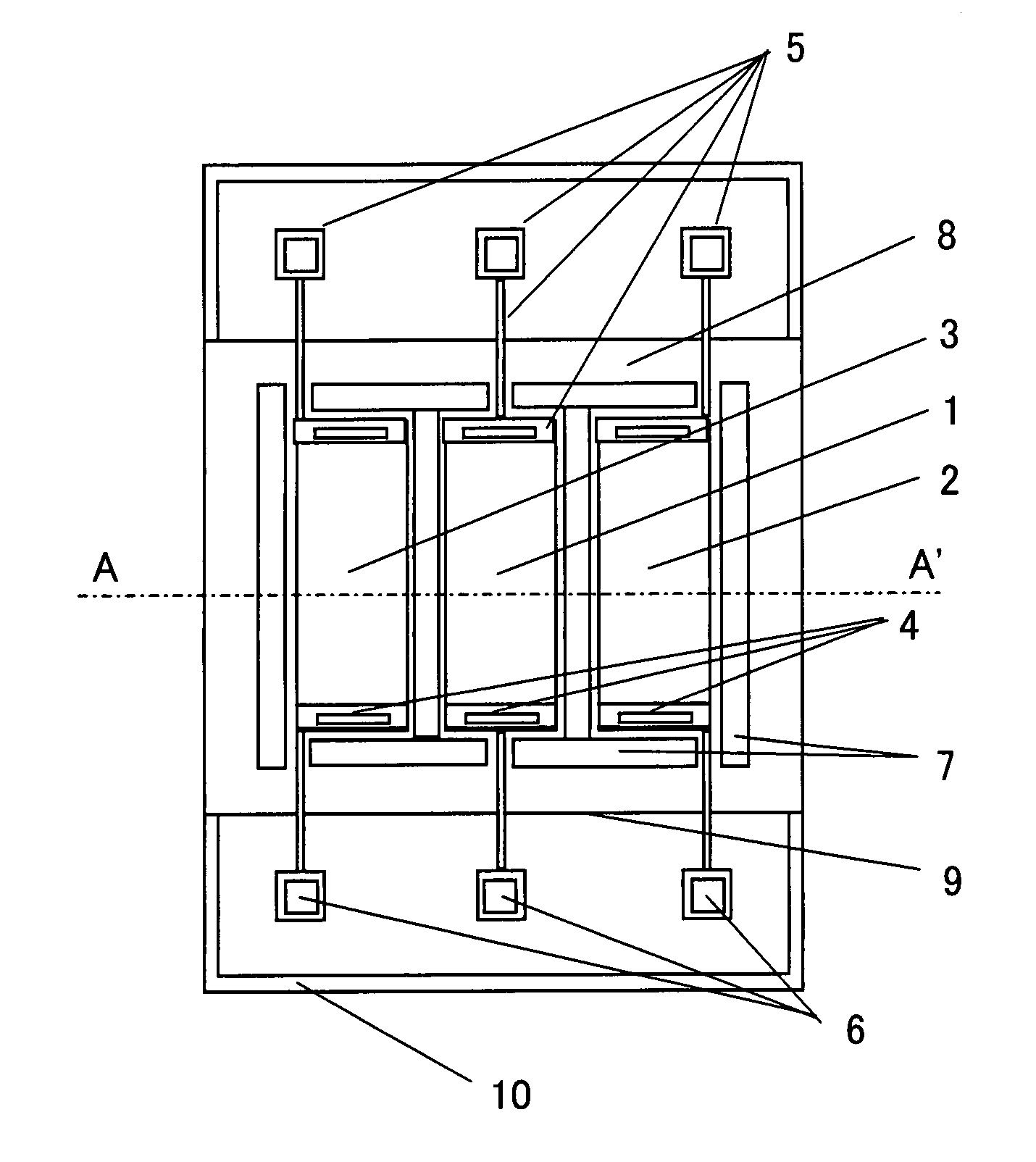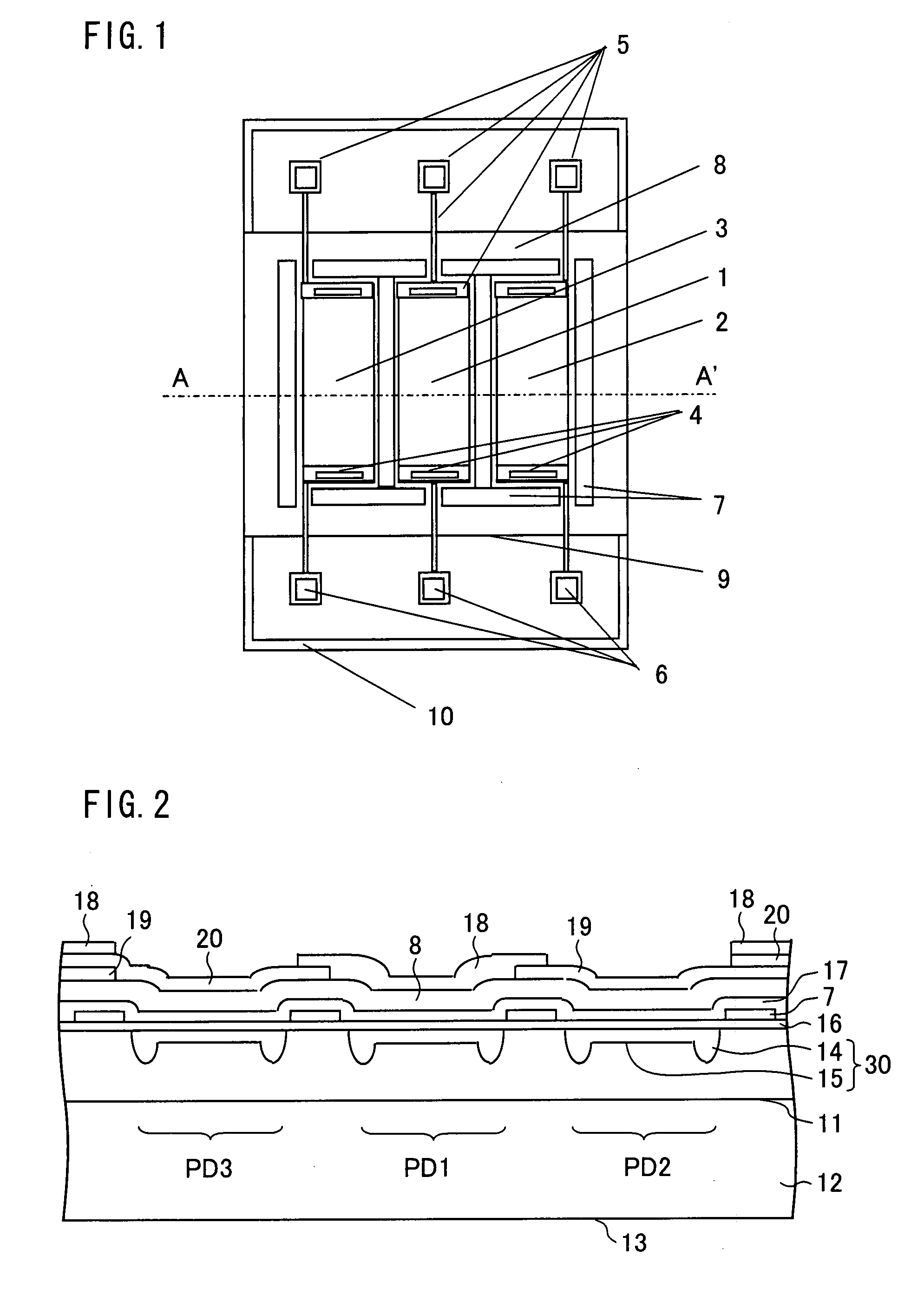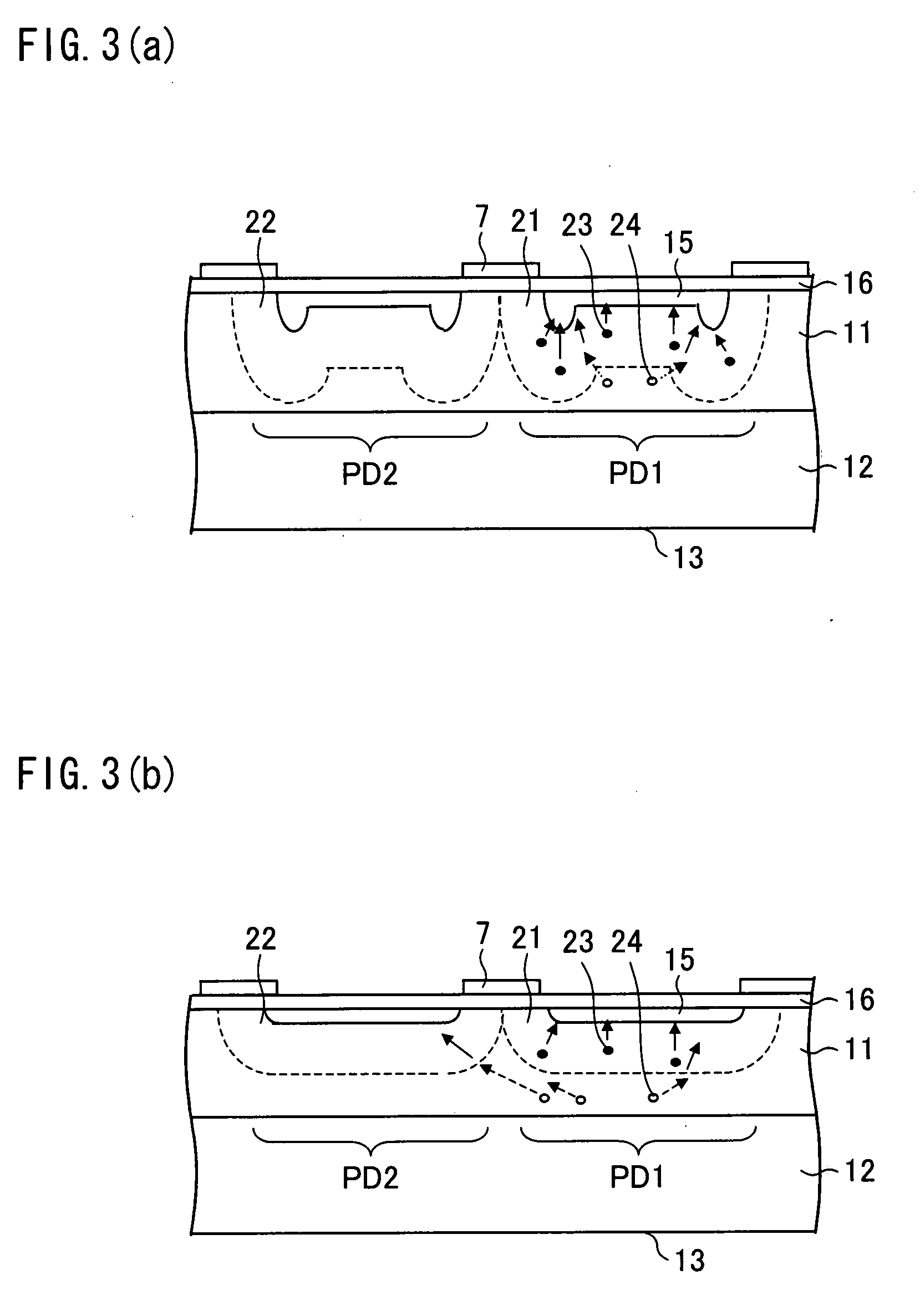Color sensor, production method thereof, sensor, and electronics device
a color sensor and color technology, applied in the field of color sensors, can solve the problems of interference with color analysis, inability of human eyes to see infrared light, and inability to detect infrared light, so as to prevent photoelectric current and achieve precise color analysis
- Summary
- Abstract
- Description
- Claims
- Application Information
AI Technical Summary
Benefits of technology
Problems solved by technology
Method used
Image
Examples
Embodiment Construction
[0039]One embodiment of the present invention is explained below with reference to FIGS. 1 through 3.
[0040]FIG. 1 is a plan view illustrating a color sensor of the present embodiment.
[0041]FIG. 2 is a cross sectional view taken along a line A-A′ of FIG. 1.
[0042]As illustrated in FIG. 2, the color sensor of the present embodiment includes a silicon epitaxial wafer in which an N− epitaxial layer 11 (serving as a first conductive layer) is formed, by using an epitaxial growth, on an N+ substrate 12 (serving as a first conductive semiconductor substrate). The N− epitaxial layer 11 of the silicon epitaxial wafer includes a P-type anode layer 30 (serving as a second conductive layer). The P-type anode layer 30 is composed of a frame-like periphery section 14 and a center region 15.
[0043]Moreover, the color sensor includes three photodiodes PD1, PD2, and PD3 which are formed to be light receiving elements by the P-type anode layer 30, the N+ substrate 12 (serving as a cathode shared by the...
PUM
 Login to View More
Login to View More Abstract
Description
Claims
Application Information
 Login to View More
Login to View More - R&D
- Intellectual Property
- Life Sciences
- Materials
- Tech Scout
- Unparalleled Data Quality
- Higher Quality Content
- 60% Fewer Hallucinations
Browse by: Latest US Patents, China's latest patents, Technical Efficacy Thesaurus, Application Domain, Technology Topic, Popular Technical Reports.
© 2025 PatSnap. All rights reserved.Legal|Privacy policy|Modern Slavery Act Transparency Statement|Sitemap|About US| Contact US: help@patsnap.com



